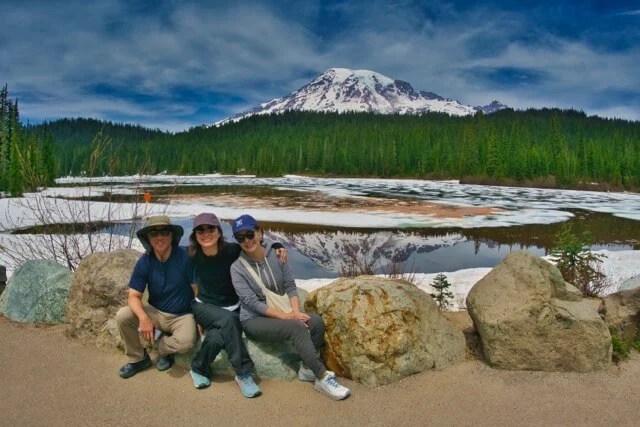SEASONAL TRAVEL GUIDE TO VISITING MOUNT RAINIER NATIONAL PARK
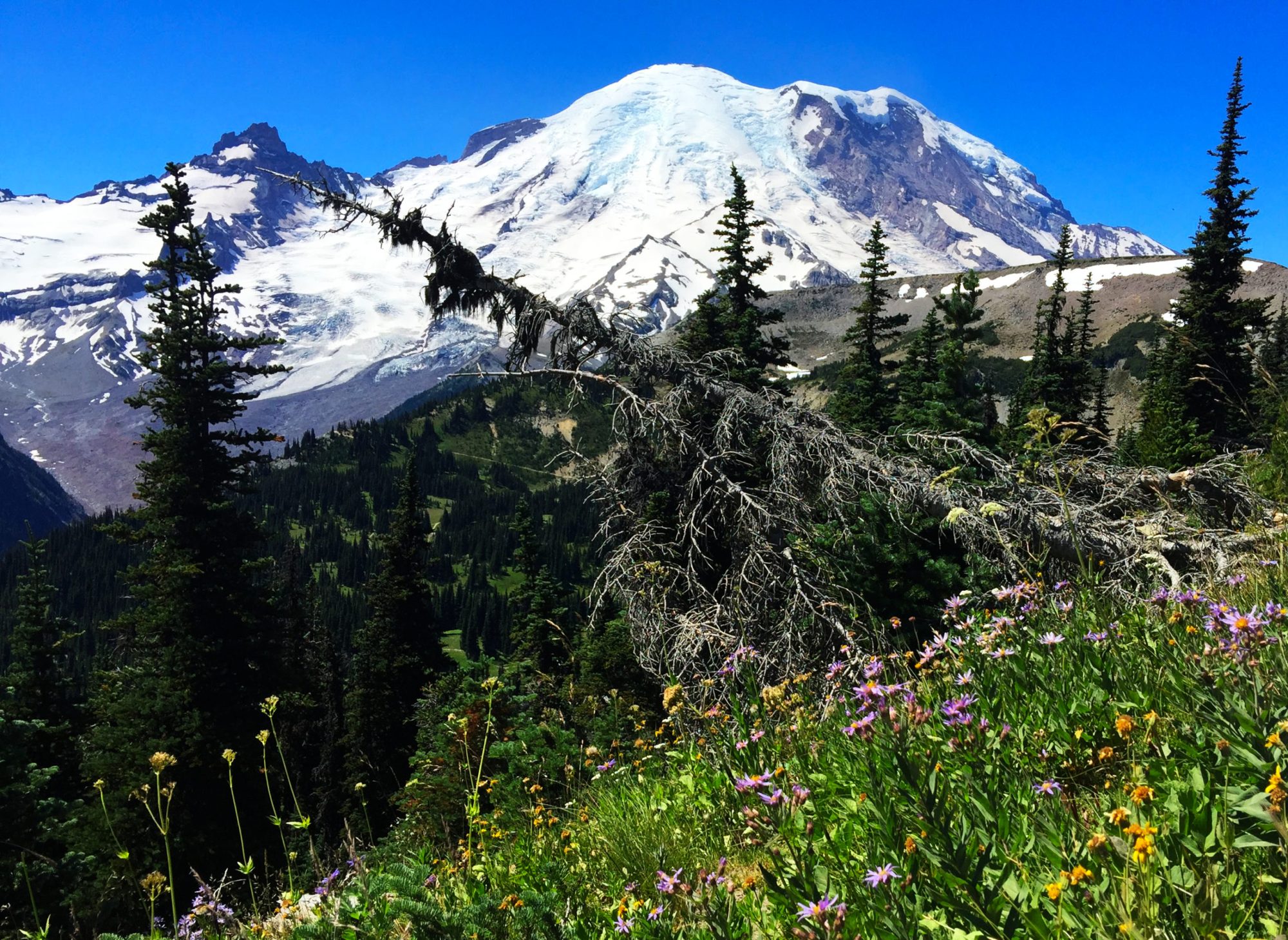
Visiting Mount Rainier in Each Season
Written by Mark Dahl | updated May 18, 2025
Mount Rainier is one of the most popular day trips from Seattle, but despite its proximity, visitors must be prepared for dramatic seasonal changes compared to the relatively temperate city. Sometimes, you even get to experience multiple seasons in a single day
About 70 miles from Seattle, as the crow flies, Mount Rainier’s 14, 411 feet tower above the horizon. Easily visible from the city on a clear day, the mountain beckons visitors to venture out to explore the national park, which surrounds this glacier-covered behemoth. As a tour guide who leads hundreds of these people through the national park every year, we can tell you they are often surprised by the conditions they find in the park. This is especially apparent when we ascend to the area of the park called Paradise, which at 5,400 feet is the highest elevation we reach by bus on our tours. You can hike up higher if you’re feeling ambitious, but we don’t force you.
What to Expect When Visiting Mount Rainier

In an effort to help you prepare for your Mount Rainier adventure, we’ll share with you some general expectations and helpful tips for various times of the year (with a giant caveat that conditions on the mountain can turn on a dime). We’re also going to share with you links to all of the websites we use to see exactly what we’re dealing with before venturing out with our tour group, and we would recommend that you do the same before your excursion.
Visiting Mount Rainier in the Winter
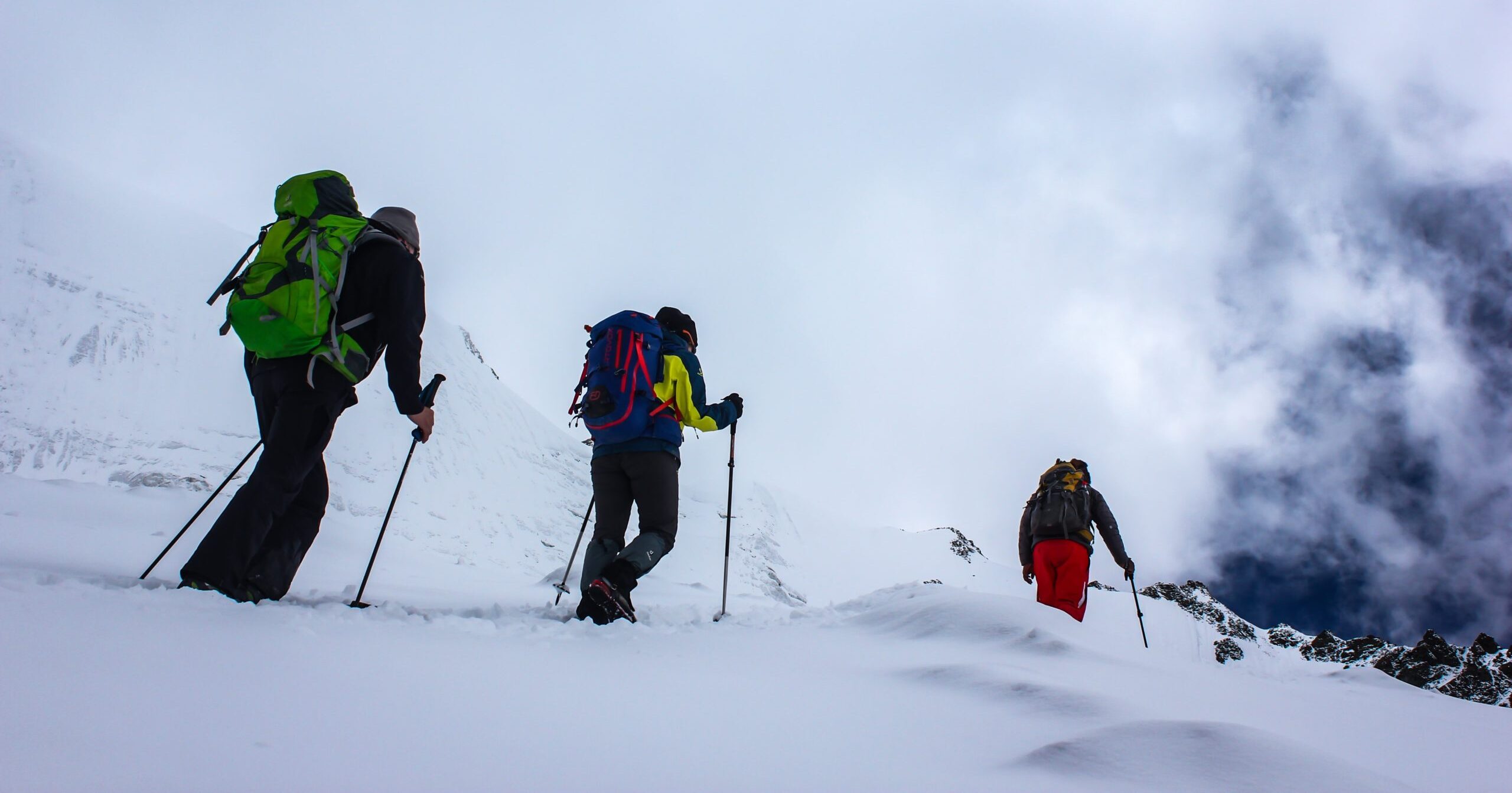
This is the best season to experience solitude within Mount Rainier National Park. That said, this is also when the vast majority of the park is closed off to vehicle traffic, so unless you’re on snowshoe or cross-country skis, there’s only so much of the park you’ll be able to see. Given how rare snowfall is down in the lowlands of the Seattle region, people are often shocked by just how much snow falls in a park so close to the city. Elevation makes a big difference. How much snow, you might ask? Enough to make Paradise one of the snowiest places on earth, with an average snowfall of 67 feet per year.
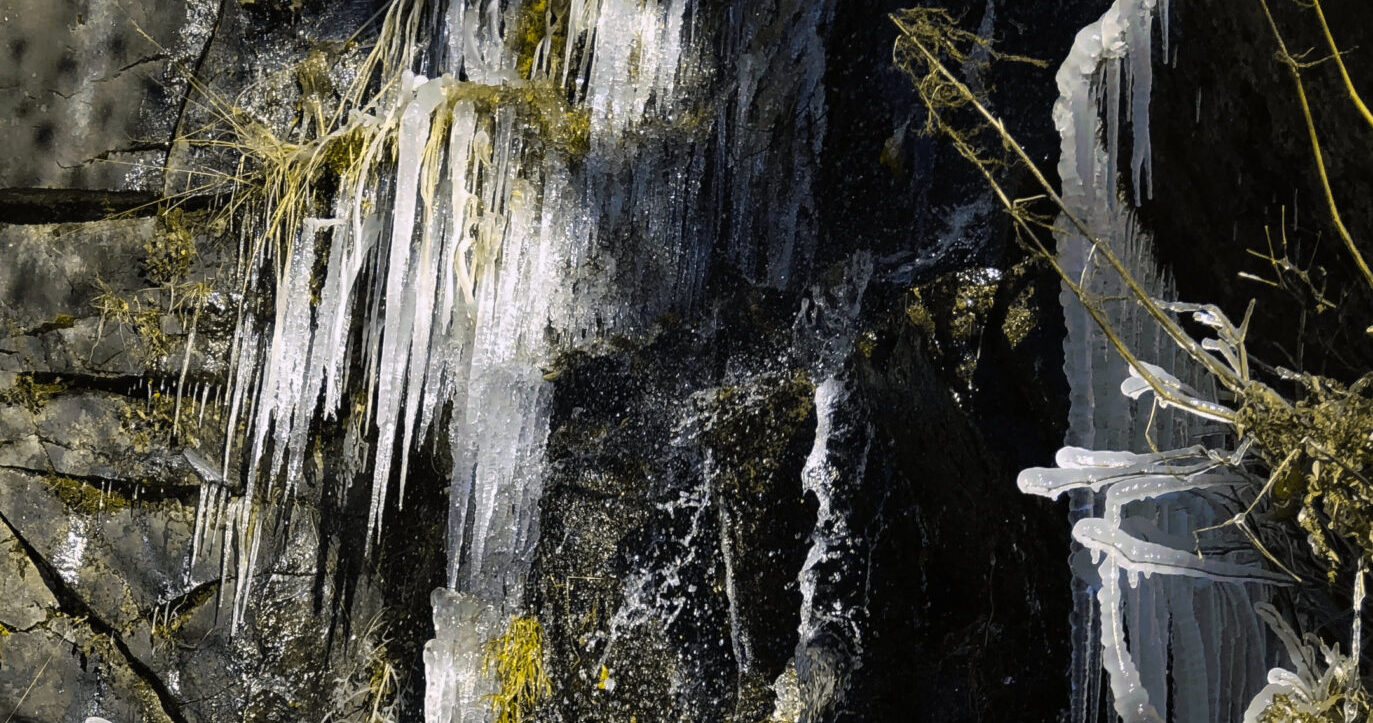
Remember that you’re required to carry snow chains when driving in the park from November 1 to May 1, and you may still need them even outside of that time frame.
Visiting Mount Rainier in the Spring
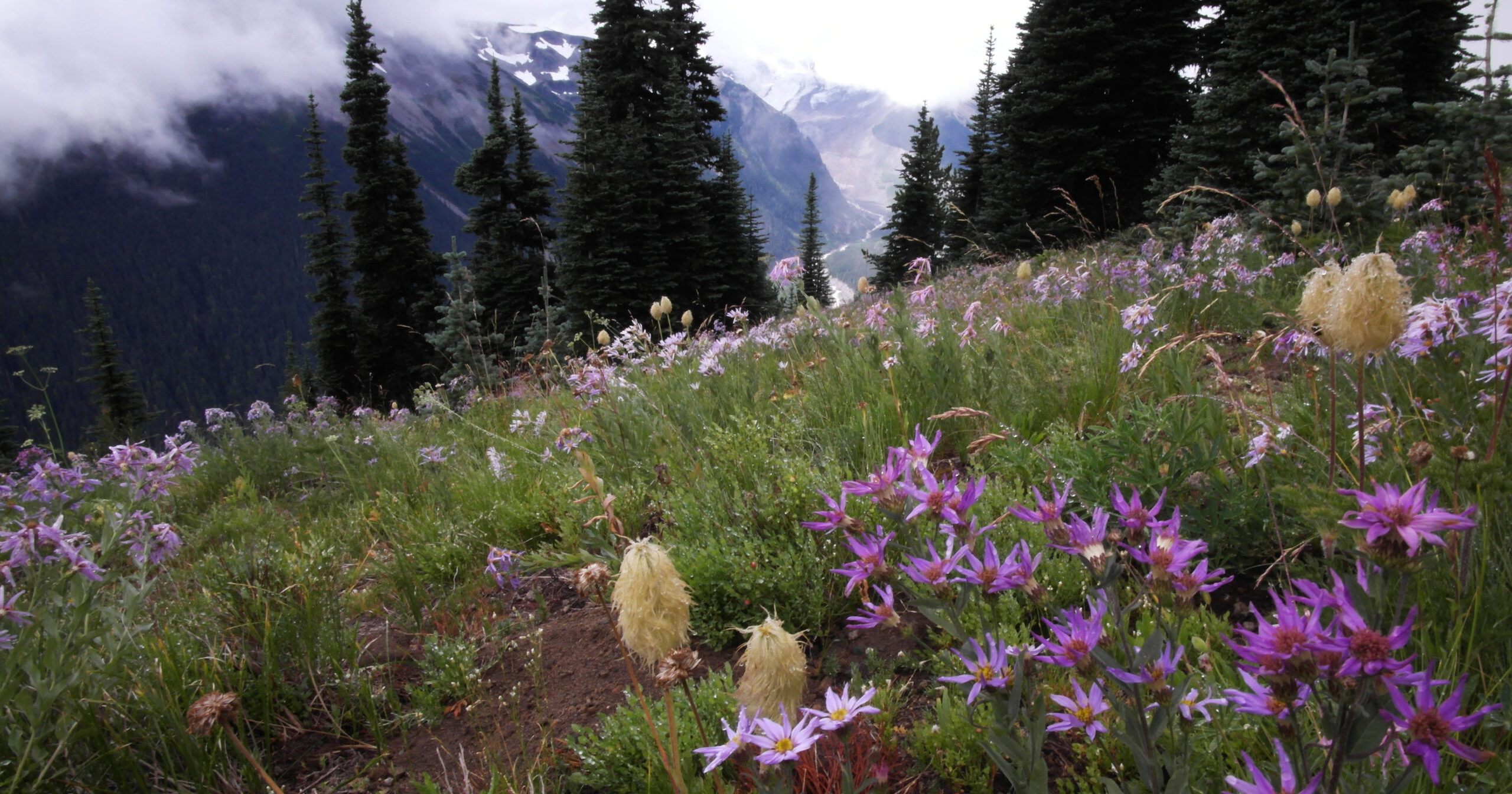
It might technically be Spring when we begin running our tours at the beginning of May, but it takes a long time for all that snow to melt off. Thus, it can be a while before Spring actually, you know, springs. It’s not unusual to still have snow on the ground at Paradise well into June, or even July. This is not to say early Spring is a bad time to visit, though, just be prepared. The ice formations are amazing sculptures in their own right, and as they melt, they create spontaneous waterfalls which only exist during this transitory season.
If you’re determined to see the mountain, We recommend checking the webcams set up by the National Park Service to see the view from Paradise before you leave. The visibility can be hit or miss this time of year, and the view from Seattle can be deceptive. For one, you’re seeing the opposite side of the mountain, and sometimes, even if there appears to only be minimal cloud cover, you can arrive at Paradise and find yourself right in the middle of that cloud, unable to see 5 feet in front of you.
Of course, even when the mountain is fogged in, the national park is still spectacular with plenty of other elements to enjoy. If you want to hike, you may want to focus more on the lower elevation areas of the park where the trails are more likely to be clear.
Considerations for Visiting Mount Rainier in the Spring
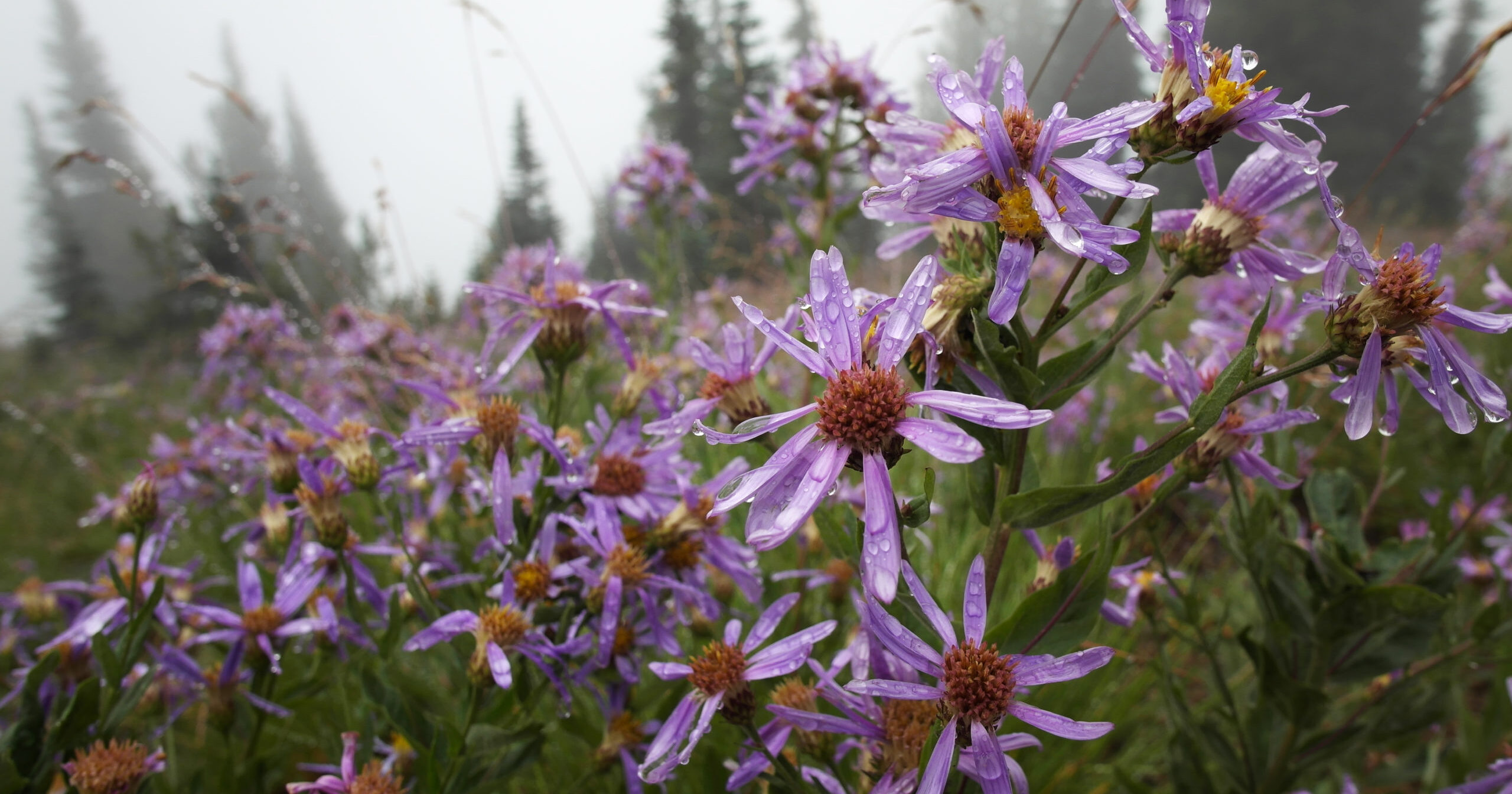
First, please wear your most comfortable shoes, preferably with good traction, ideally waterproof boots if you have them. This advice applies to any time you might visit, but it’s especially imperative as the snow is melting leaving many trails quite muddy. It’s also not unusual to think the snow has fully melted from the trail head, only to find snowy patches that you wish you were wearing waterproof boots for as you go deeper into the woods.
Second, remember to bring sunblock (especially in later Spring). We always bring some on my tours for guests because many don’t realize just how sunny it can get up there, and the reflection from the snow makes sunburns that much more likely. On a side note, you can often experience a strange cognitive dissonance in June where you find yourself walking on a snowfield while sweating from the heat.
Visiting Mount Rainier in the Summer
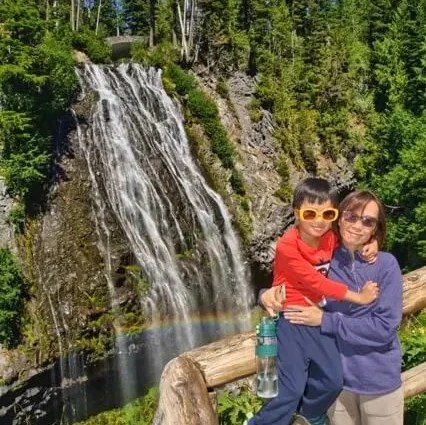
July and August are the most popular months to visit, which makes sense. Once the snow fully melts, the meadows of Paradise erupt into the wildflower displays they are so famous for (and which are also the reason for the name Paradise).
These are also the driest months when you have the best odds of a clear view of the mountain (nothing is guaranteed, of course, and you can get fogged in even in July).
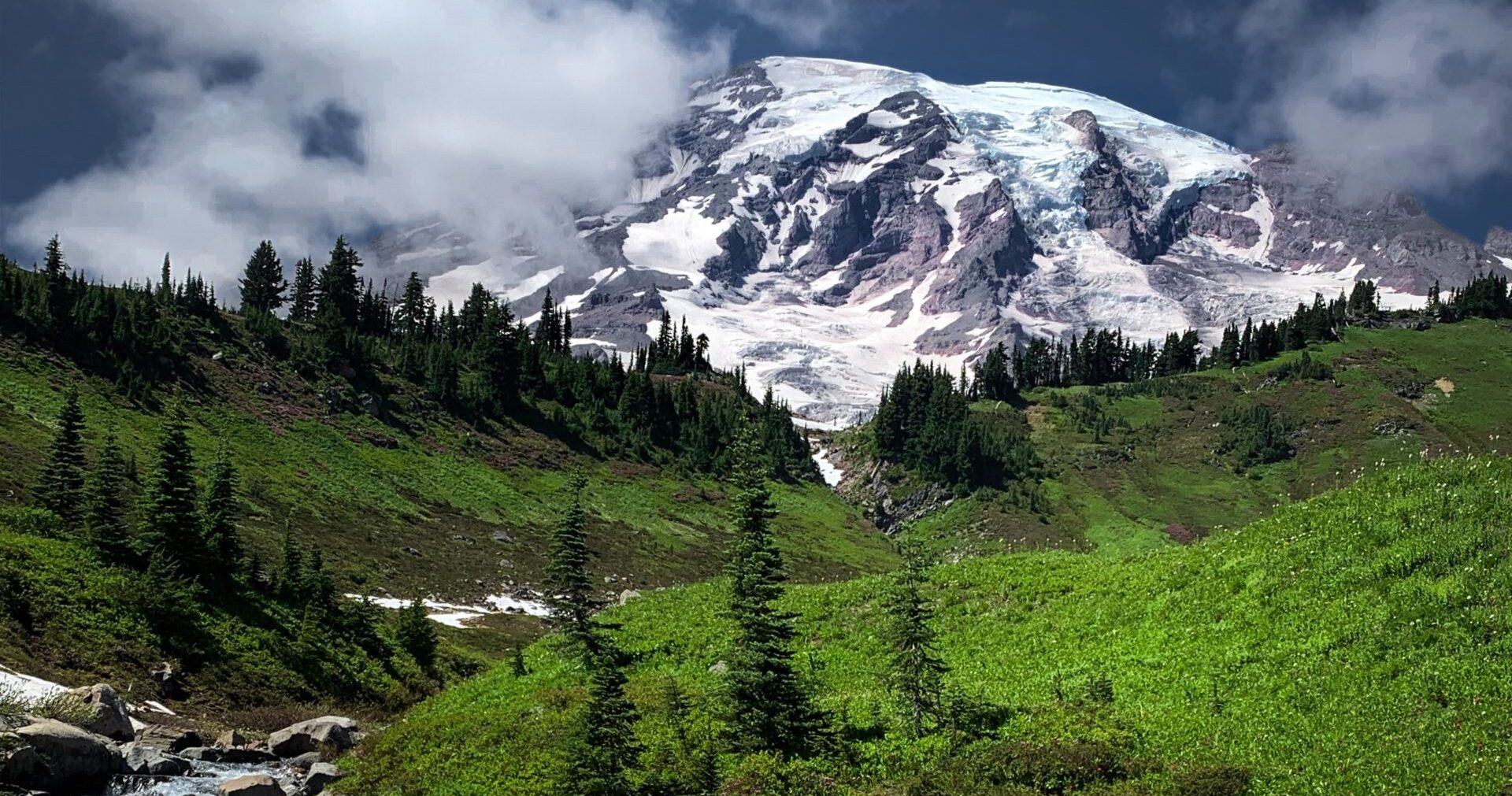
The biggest downside to consider is the crowds. Mount Rainier National Park had 2,477,816 visitors last year, and most of them came during these two months. For this reason, I recommend getting a very early start (our tours try to leave Seattle by a little after 7 am), avoiding weekends if possible, and checking their Twitter feed or Google Business Profile before venturing out (they will usually post when the line to get in is especially bad).
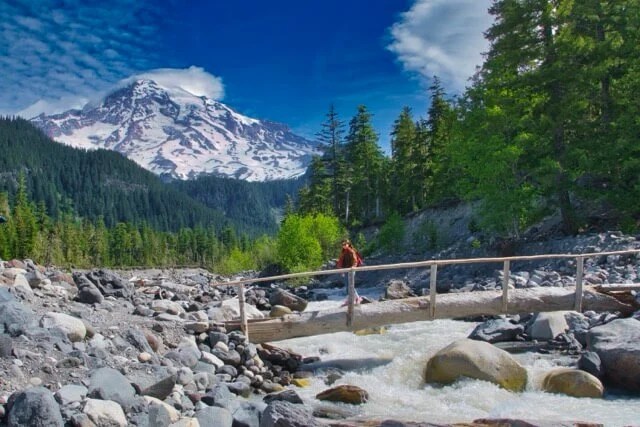
Also, consider approaching from a different entrance. Another advantage to this time of year is the roads are usually all open – this means you can enter from the Stevens Canyon gate (usually far less busy) and leave through the Nisqually gate (waving smugly at the miles-long line of cars waiting to get in).
Visiting Mount Rainier in the Fall
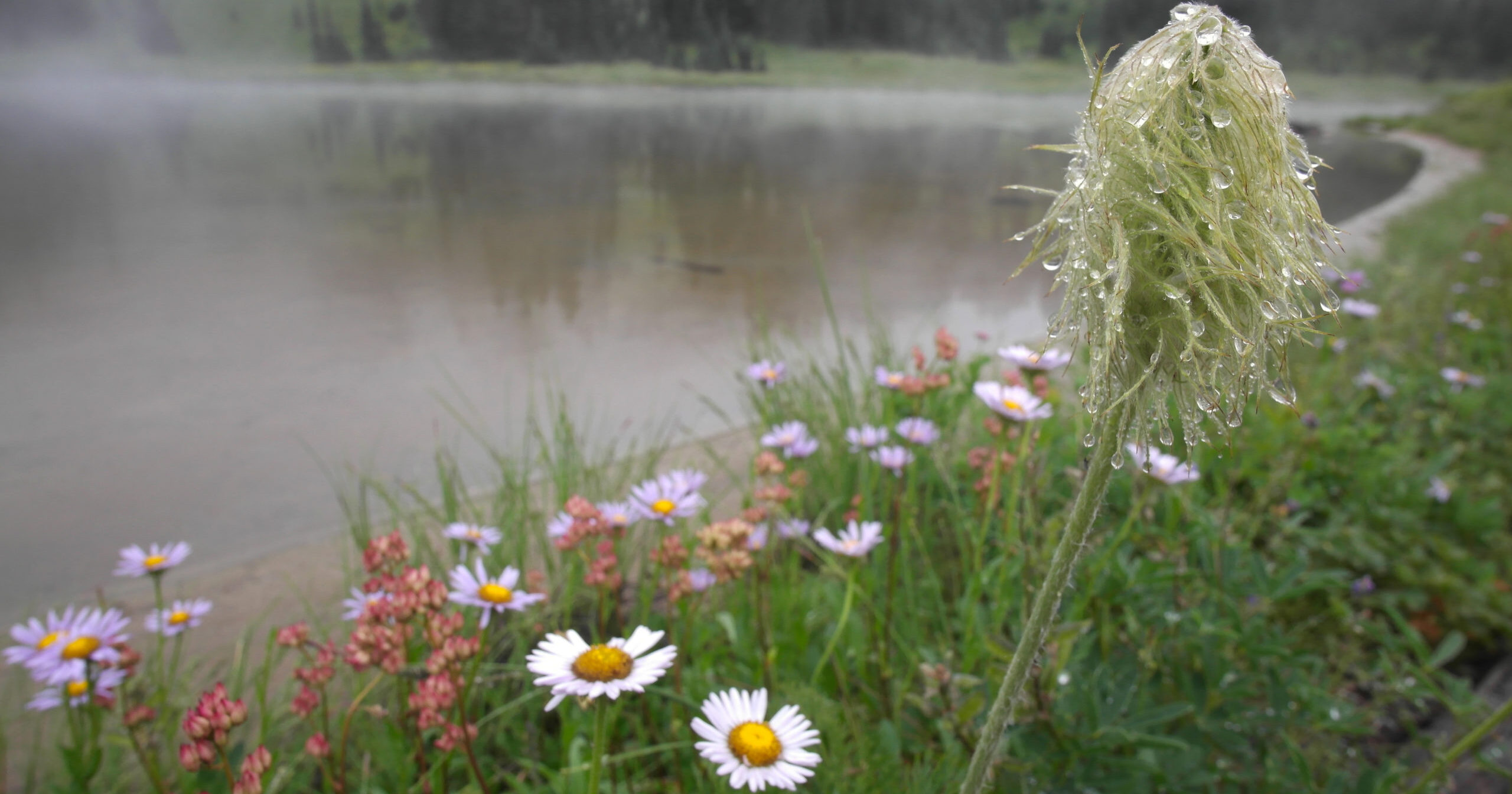
A brief window exists in the early fall:
- kids are back in school, so crowds begin to thin
- the temperatures are cooler, but the skies are still clear for views of the summit
- all of the roads through the park are still open!
This, for us, is the perfect time to visit (and we’re reluctant to share this secret at the risk of further crowding).
You must remember how very brief this window is, however, because mid-October (sometimes earlier) means snow will once again factor into your travel plans: roads may be closed, chains may be required and you should once again consult the NPS website before heading out to check the webcams and see if there are any advisories to be aware of.
All of this advice is in no way intended to dissuade you from visiting Mount Rainier National Park (unless it’s one of the busiest summer days, in which case, feel free to be dissuaded). Even on tours we’ve led where every variable is working against us, we find that people still have an amazing time – Mount Rainier is just that incredible.
Visiting Mount Rainier National Park is Easy
We would, of course, love it if you would join us on one of our tours, in which case we can take care of all the details and you just have to show up wearing comfortable shoes (not to belabor that point, but you would be amazed at how many people cause themselves misery by wearing inappropriate clothes and shoes).
If you decide going on your own is the best fit for you, be sure to check out Visit Rainier for more helpful info ahead of your trip!
Don’t forget to make reservations which are now required beginning in 2024.
Whether you go with us or on your own, We hope these tips from someone who’s spent more time in the park than most will prepare you for an amazing journey!
Private Tours Make Visiting Mount Rainier Even Easier
If you want a personalized, flexible way to experience Mount Rainier, consider our Private Mt. Rainier Tour. Perfect for families, couples, or anyone looking to explore at their own pace, this 10-hour experience includes hotel pickup in a comfortable Chevrolet Suburban LTZ and a local expert to guide your day.
- No permit or timed-entry required
- Hike as much or as little as you want
- Choose Paradise or Sunrise Visitor Centers (weather permitting)
- Visit Narada Falls, Reflection Lake, Lake Tipsoo, Christine Falls, and more
- Snowshoes provided in winter
- November–April discounts available
You’ll see places our public tours don’t reach and enjoy professional, friendly service from start to finish. It’s one of the most relaxing and immersive ways to experience Mount Rainier.

